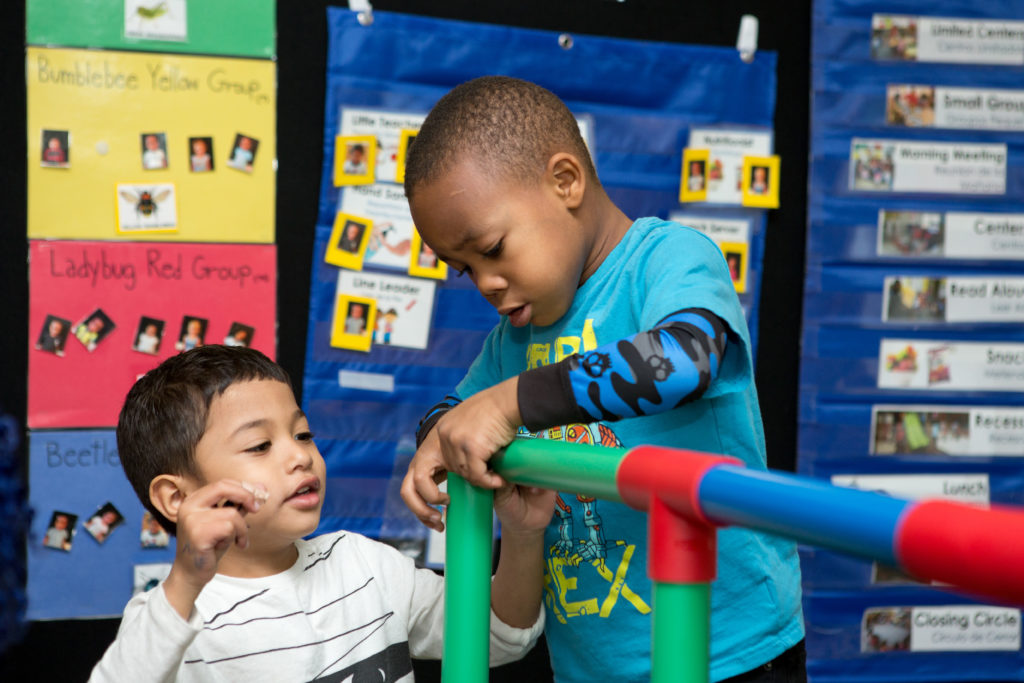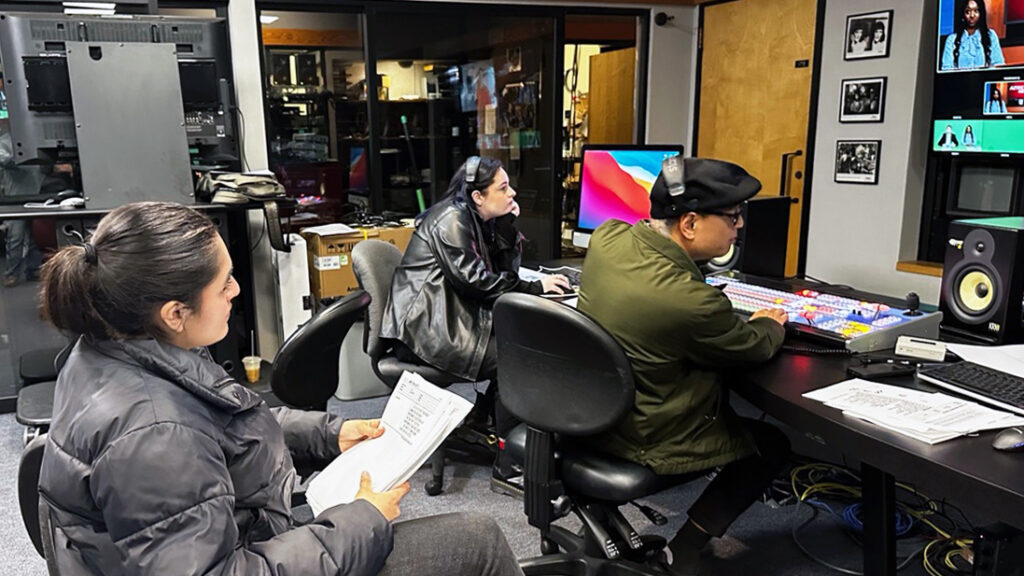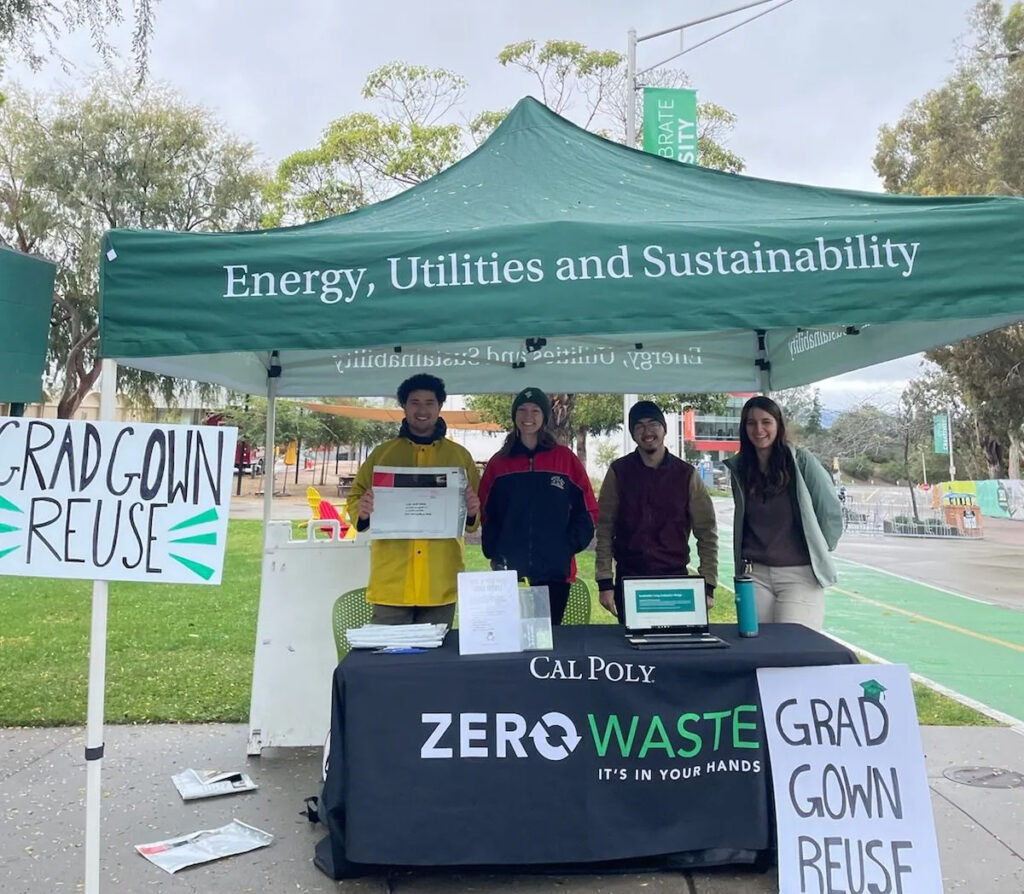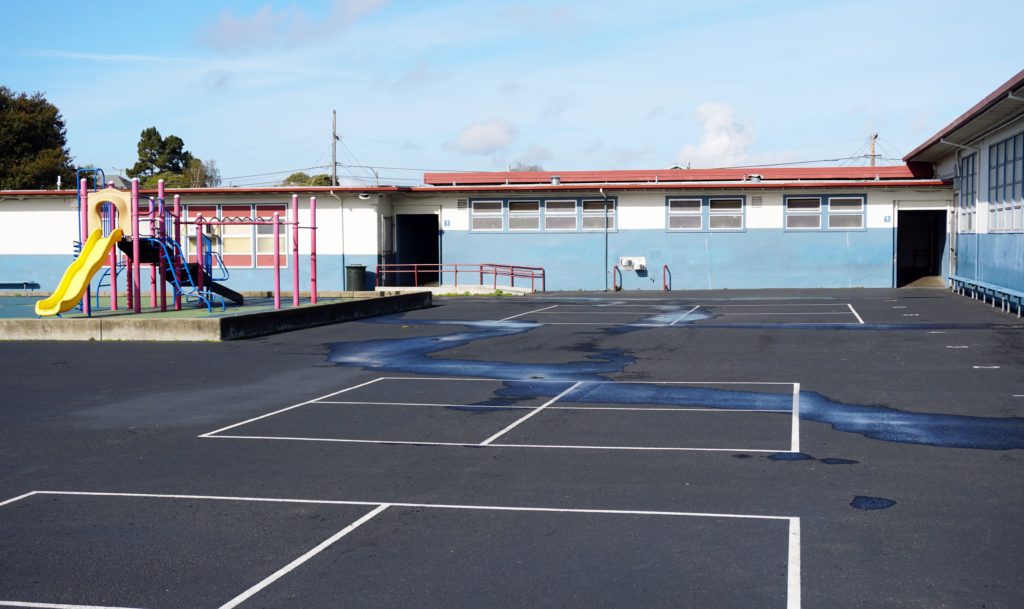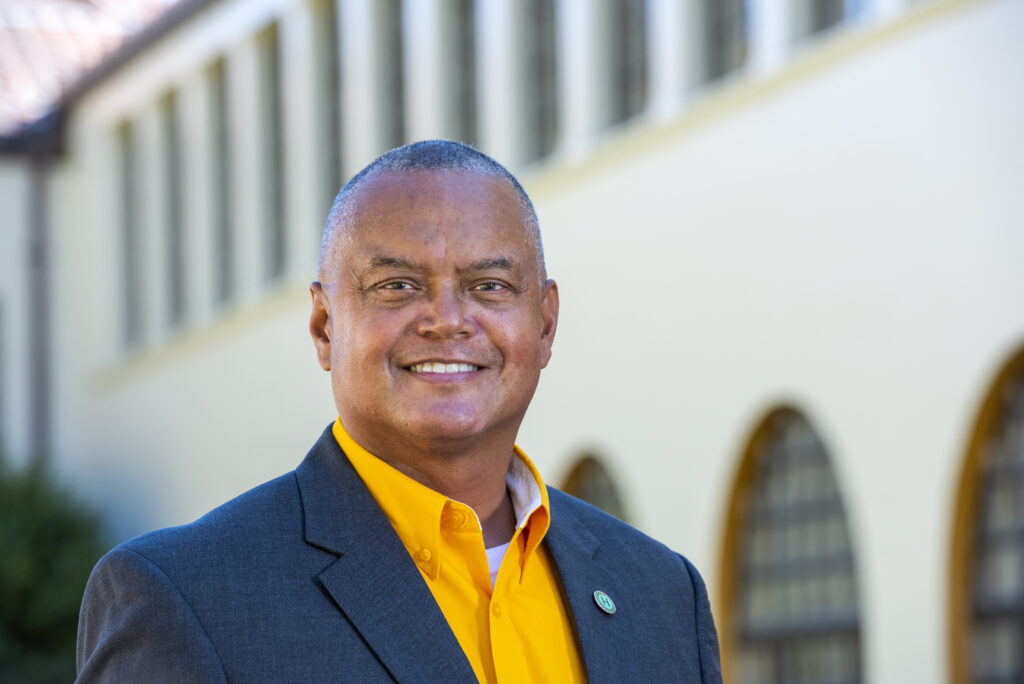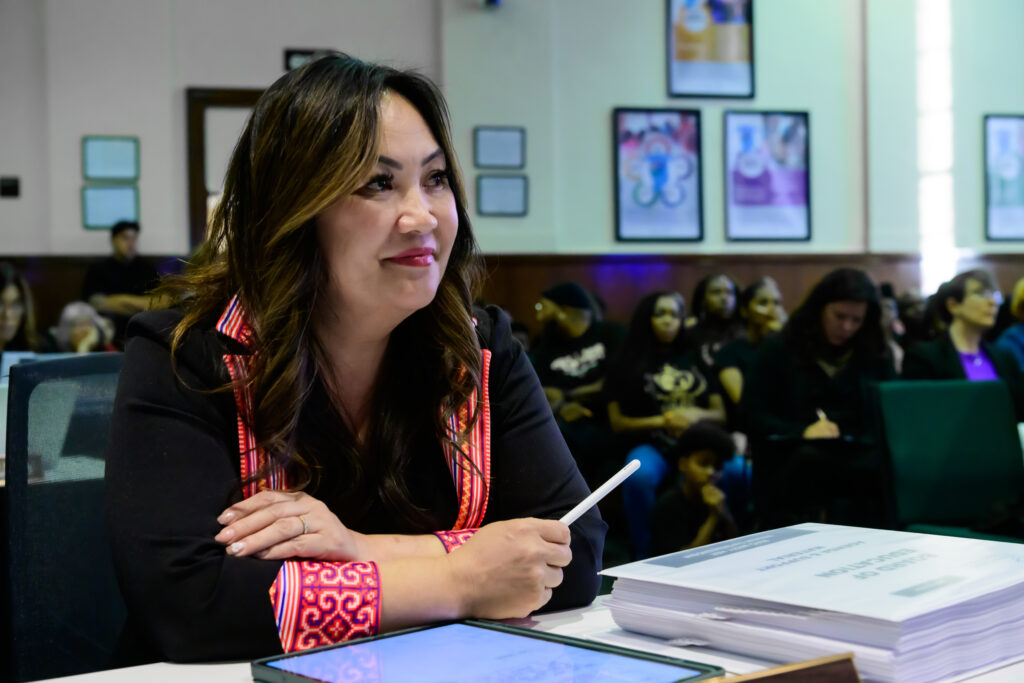
Bob Nelson, outgoing superintendent of Fresno Unified School District
Credit: Fresno Unified / Flickr
In almost seven years of superintendency, Bob Nelson focused on “grow-our-own” initiatives that include 18 teacher pipeline programs for Fresno Unified students, aspiring teachers and current educators.
Seventy-nine percent of new teachers joining Fresno Unified come through one of the district’s teacher pipeline programs, but there is no “similar thing on the leadership side,” said Nelson, the district’s outgoing superintendent. There’s no pipeline program to recruit, retain or support educators or school leaders hoping to become district administrators.
In summer 2023, a cohort of 19 district leaders, most of whom are people of color, graduated from the doctoral program at San Diego State — a result of collaboration between the university and school district which has ignited Nelson’s vision to develop a “grow-our-own” administrator program in the Fresno and broader Central San Joaquin Valley area.
Nelson says that the cohort of administrators graduating from San Diego State is one of the highlights of his superintendency as well as the reason for leaving Fresno Unified for a tenure-track position at California State University, Fresno.

Fresno State offers a doctoral program in educational leadership, but Nelson wants to strengthen it to draw more Fresno and Central Valley leaders into a Fresno-centered program that can develop administrators for the region.
“I feel it’s my responsibility to go and try and build a cadre of leaders here locally that can come and lead Valley schools,” Nelson said in a sit-down with EdSource in May.
On May 3, the Fresno Unified school board appointed Misty Her, the district’s deputy superintendent, to lead the district on an interim basis while a national search for a permanent replacement is conducted. Her started the interim superintendency on May 8 with Nelson moving into an advisory role until his last day on July 31.
Ahead of his last day, Nelson talked about his seven-year tenure as the leader of the state’s third-largest district and the importance of the new role he’s about to embark on.
Why leave now?
“I’m leaving because I feel really comfortable leaving the district in the hands of my deputy (Her). (I’m) stepping aside so that the first woman in 151 years can come and lead the district,” Nelson said. “It’s time. Leaving on my own volition feels good; I mean, that’s powerful.”
‘Pinnacle of my career’
“Serving as the superintendent in the district where I initially taught elementary school and first served as a leader has been the pinnacle of my career thus far,” he said in his Jan. 22 resignation announcement.
Prior to his appointment as superintendent, Nelson had served the district for over 23 years, holding various positions, including teacher, vice principal, principal, human resources administrator and chief of staff, according to the school district.
What is greatest accomplishment as superintendent?
Nelson said he is most proud of the “visible changes” across the district, including career technical education (CTE), a guaranteed college admissions program, an increase in district-sponsored scholarships, more diverse staff and the pace of student growth.
CTE pathways
“When I came into the district, people were running for the board on a platform that there were no college/career options for kids,” he said. “I think that’s changed demonstrably.”
The changes, he said, include: the heavy truck and diesel maintenance facility and the pharmacology school at Duncan Polytechnical High School, opening the sports medicine complex and setting up an agriculture pathway at Sunnyside High School, and buying land at Chandler Air Force Base to train private pilots and to teach people to fix planes, making the public service pathway — police, fire, EMT — out of Roosevelt High School.
Other accomplishments Nelson mentioned include: offering heating, ventilation and air conditioning certifications at Fresno High School; building teacher pipelines at Hoover and five other high schools, opening a law pathway at Bullard High School, and expanding social justice at Edison High School.
“Kids have access to more than they’ve ever had over the course of seven and a half years,” he said.
Bulldog Bound
Nelson developed a partnership with Fresno State to offer Bulldog Bound Guaranteed Admissions, which provides students college and career prep throughout their entire high school career as well as a guarantee that, once they graduate, they’ll have a spot at Fresno State.
“I was on the front end of authoring the Bulldog Bound initiative in collaboration with Fresno State, making sure every single one of our kids has guaranteed enrollment,” he said.
A foundation
During Nelson’s tenure, Fresno Unified also established the Foundation for Fresno Unified Schools, which now has a $20 million endowment that funds up to $800,000 in scholarships annually — “which is more than we’ve ever given away,” he said.
Diversity
Nelson recalls that in 2017, only two of district’s nearly 100 schools were led by Black principals — although African American students made up at least 8% of the student population. That’s no longer true. Now with over 10 Black principals, school leadership is a more accurate representation of the student enrollment.
Nelson’s senior leadership team is much more diverse, he said, pointing out a rise in Hmong and Latino leaders as well.
“It’s true diversity,” Nelson said. “Every single year of my tenure, and actually several before I got in, the staffing is more reflective of the students that we serve. In every respect — teaching staff, leadership staff, professional staff, including classified personnel — it’s all more indicative of the students that we serve.”
Based on 2022-23 state data, more than 92% of Fresno Unified students are minorities.
“Kids need to see visual images of people who look like them, talk like them, sound like them, have their lived experience,” Nelson said.
A faster pace
Nelson said he is thankful for student academic growth, which outpaces the state’s.
Based on the California Assessment of Student Performance and Progress, or CAASPP tests, the percentage of students meeting or exceeding standards statewide improved by 6.87% in English and 6.07% in math from 2015 to 2019.
While Fresno Unified is still below state percentages in students meeting standards, from 2015 to 2019, the percentage of students meeting or exceeding standards outpaced the state’s improvement — by 11% in English and 11.85% in math.
“If you only look at the bar of proficiency, we’re always behind,” Nelson said. “But we’re always gaining distance from standard at a rate that’s faster than other people across the state.”
Because of the pandemic, students statewide, including those in Fresno Unified, experienced learning loss that dropped test scores.
Following the pandemic, from 2022 to 2023, there was a statewide decrease in students meeting or exceeding English standards and a 1.24% increase in math.
Fresno Unified scores increased by 0.96% and 2.49% in English and math, respectively, meaning students are again improving at a faster rate, as they were before the pandemic.
“The same thing (a faster pace of growth) is happening right now with chronic absenteeism (when students miss 10% or more days in one school year),” Nelson said. “Like we’re closing chronic absenteeism at a rate that’s faster than anybody.”
From the 2021-22 school year to the 2022-23 school year, Fresno Unified reduced chronic absences by 14.9% in contrast to the state’s 5% reduction.
“I’m really proud of that,” Nelson said.
Were all his goals met for the district?
“Our kids have needs that are greater (because they) come from abject poverty; you start from a different starting line,” Nelson said.
According to 2023-24 district data, 88% of students are living in disadvantaged circumstances.
“So, the level of systemic change that is needed to help kids thrive is just a higher, deeper, more robust level of change,” he said. “Did I crack that nut in its entirety? No. There’s always room for improvement.”
What does Misty Her inherit?

“What I am leaving, hanging over, is I launched this literacy initiative, wanting every child to read by first grade,” Nelson said.
In late May, the school district finalized the Every Child Is a Reader literacy plan, a comprehensive five-year plan to achieve first-grade reading proficiency for students, according to a media release.
“The actual digging in and observing the curriculum around that initiative is going to be left for my successor. That is something that’s being held over (for Misty Her),” Nelson said.“I think she is a stronger academic leader and will help move the literacy work in ways that I have not. (As an early learning teacher), she knows very clearly what it takes for kids to read, understands all the complexities of the science of reading — is it phonemics or is it whole language —and balancing those approaches to make sure that kids have what they need.”
How does superintendent experience help at Fresno State?
Nelson will join the educational leadership division at the Kremen School of Education and Human Development. Although he’s leaving K-12 education as a leader, he’ll take his experience and knowledge into the role at Fresno State, which, this year, accepted 2,150 Fresno Unified students — the highest number ever accepted.
If all the accepted students were to attend, Fresno Unified graduates would make up around 20% of the university’s enrollment, based on Fresno State enrollment data that shows over 2,800 FUSD alumni.
“Higher ed needs to better understand what’s going on in Fresno Unified,” Nelson said. “Understanding who we are and what we represent and what we’re trying to do, I think, is critical.”
In applying for the role at Fresno State, Nelson had to teach a lesson, in which he demonstrated his ability to bridge the gap between Fresno Unified and Fresno State, he said.
“I compared their mission, vision, core values and statement of purpose against the lived experiences of the district that they serve (Fresno Unified) and said, ‘If you’re going to say these things, then that has to mirror the lived experiences of the districts that you’re in,’” he said. “’I think I can help you get from here to here. I can bridge that gap.’”
Nelson’s responsibilities at Fresno State?
A tenure-track position will give Nelson the opportunity to continue serving Valley educators.
“I have master’s degree students who are probably teachers, working full time every day, that want to become vice principals and principals and then, potentially, district leaders and on and on … and then helping master’s students get their master’s projects completed too,” he said of the position.
Why back to the classroom?
Before becoming superintendent of Fresno Unified, Nelson taught at Fresno State and “loved every minute of it.”
“I’m really, really excited to just go back to teaching,” he said. “Almost every school counselor that we brought in our system (Fresno Unified) were my former students from Fresno State. You find the best leader, siphon them out and then try to get them into the places in the Valley where they can serve kids.”
What about the goal of a local ‘grow-our-own’ administrator program?
In 2021, Fresno Unified won an $8.2 million grant from the Wallace Foundation to develop and support a pipeline of equity-centered leaders with which the district developed a collaborative relationship with San Diego State. This led to the district’s first cohort of leaders matriculating through the doctorate program. The partnership allows Fresno Unified leaders and faculty — who model what the graduate students are looking to become — to teach the courses in Fresno.
Many of the district leaders who obtained their doctorate from San Diego State in 2023 are now teaching the new cohort of Fresno Unified administrators coming up behind them at San Diego State.
“San Diego State has a really robust infrastructure to take leaders and help them kind of go to the next level,” Nelson said. “Most of what San Diego State is doing is they’re taking existing leaders and getting them their doctorate, and those leaders are ending up in district positions. I’m not sure Fresno State is there yet.”
Nelson’s goal: grow and develop administrators through Fresno State in a way similar to the partnership at San Diego State.
Fresno State has a doctorate program for educational leadership in preK-12 schools and districts, community colleges and universities.
Prior to 2018, Fresno State allowed Fresno Unified leaders and instructors to teach graduate-level courses to prospective leaders, according to Nelson. Now only Fresno State faculty can teach the courses.
“The tenure-track faculty members at Fresno State — the vast majority of them have an emphasis on higher ed, so perpetuating other collegiate leaders,” Nelson said.
“Meanwhile, there’re 150 districts that are all clamoring to find leaders.”
A local program geared toward leadership of K-12 schools and districts is also important to create a collaborative space for them, Nelson said.
“There’s people that I deeply respect in the Valley who also sit in the superintendency,” Nelson said. “I think of Todd Lile in Madera. I think of Yolanda (Valdez in Cutler-Orosi Joint Unified). And there’s no space for us to be together to jointly plan or even talk or collaborate because we’re in three different counties.”
That’s a problem, he said.
“There needs to be a structure by which people who are on the same journey in the same region can collaborate with one another,” he said. “I think Fresno State is uniquely positioned to be able to bring those leaders together. … If you’re in a cohort of people who are on the same journey and have the same goals and you’re trying to strive together, (such as) in your doctoral program, it matters.”
His goal to strengthen the program at Fresno State doesn’t quite fit into his role as professor, but he wants to build and support an effort to reach that goal.
“Fresno State has what’s called the Welty Center for Educational Leadership, and they organized that with the intent of doing exactly this work as a collaborative space for leaders across the Valley,” Nelson said. “(I’m) trying to use that Welty Center as a jumping off place to just provide support for leaders across all of the 150 districts that feed into Fresno State.
“There’s just a high degree of need, and the focus cannot be solely on higher ed. It has to focus on the K-12 experience.”
Is there interest in joining district leadership?
EdSource found that there’s been a rise in the number of California superintendents leaving the job, with many blaming stress, threats and politics.
“I am not going to cop to that. I think that (narrative is) what I’m out to fix,” Nelson said. “I actually think leadership is not only critical, it is a wonderful blessing, and I need people to understand that. We have to change the counterculture narrative that leadership is not possible or not sustainable or a dead-end thing.
“Finding superintendents who actually want to serve is harder than it’s ever been, and there’s a lot of reasons why that’s a factor, but we have to actually push back against that.”


